- Author: Pamela Kan-Rice
- Re-posted by: Gale Perez
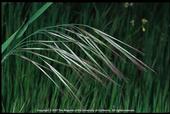
When wildfires burn in California, people often call them forest fires or brushfires, but the odds are high that an invasive weed is an unrecognized fuels component, says a UC Agriculture and Natural Resources scientist.
“We have all of the nasty non-native Bromus species here in California, and these weeds are key drivers of increasing fire frequency,” said Travis Bean, UC Cooperative Extension weed science specialist based at UC Riverside.
The invasive, non-native Bromus species aggressively outcompete native plants, forming dense stands that grow fast and dry out quickly, becoming highly flammable. Fire can move...
- Author: Thomas Jabusch
- Posted by: Guy B Kyser
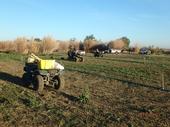
Arundo donax is devastating to riparian habitat and becoming increasingly widespread in the Sacramento – San Joaquin Delta. To counter this growing problem, the Sacramento-San Joaquin Delta Conservancy (Delta Conservancy) envisions a delta-wide, long-term Arundo Control and Restoration Program to treat Arundo infestations and restore native vegetation to improve habitat along Delta waterways.
Since 2014, the Delta Conservancy has led a pilot project controlling Arundo and restoring riparian forest habitat in the Cache Slough Complex, funded by the California Department of Water Resources (DWR), and partnered with the Solano Resource Conservation District (SRCD) and Sonoma Ecology Center (SEC). As part of the Delta...
- Author: Brad Hanson
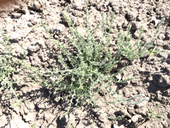
James Schaeffer and his UCCE and CSU Fresno colleagues are conducting a survey to gather information on a relatively new weed problem in orchard crops of the San Joaquin Valley. The species, alkaliweed (Cressa truxillensis) is a native perennial that can be a really difficult weed to control because 1) it is a perennial so not very senstive to PRE herbidies, 2) it is not very sensitive to glyphosate, and 3) it is very tolerant of saline soils where many other plant species do not grow well.
James' request and link to the survey is below
- Brad
WEED...
- Author: Sarah Light
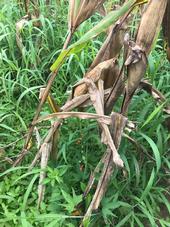
In March of this year I traveled to Chimoio, Mozambique to provide an Integrated Pest Management training to a group of farmers through the USAID Farmer-to-Farmer program. On my first day at the farm, we toured the farm and discussed their worst pest issues. One of the farmers brought a red flowering weed to show me, which he said it caused major issues in corn and was very difficult to control.
We continued on our way and it became clear that the biggest pest issue they were facing was the fall armyworm, an invasive species that spread to Mozambique in 2017 and can decimate a corn field. Since chemical inputs aren't always economically feasible for low-input systems like the one I was working in, I was interested learning about...
- Author: Brad Hanson
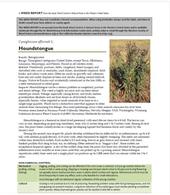
I was debating about what to post on the weed blog this week and, like manna from heaven, a topic dropped in my lap!
Well ok, it was actually the summer newsletter from the Western Society of Weed Science but it had an article about biological control agents on houndstongue (Cynoglossum officiniale).
The article, entitled "Houndstongue Biological Control: Status Report" was written by Carol Randall from the USDA Forest Service. You can find the article at this LINK and scroll down to page 11 for Carol's summary...


